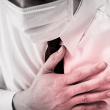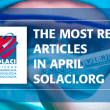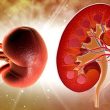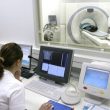Low colchicine doses reduce the risk of post-AMI ischemic events according to the COLCOT trial, originally presented at AHA 2019 scientific sessions, and simultaneously published in NEJM. The new information delivered at the virtual ACC 2020 addresses its cost-effectiveness. Colchicine is an anti-inflammatory drug indicated in the treatment of gout and pericarditis, but its price...
Cardiovascular Sequelae Associated with COVID-19
Myocardial injury, as defined by an increased troponin level, can occur due to both ischemic and nonischemic processes. Myocarditis would be an example of a nonischemic event. A severe, acute respiratory infection causing hypoxia, especially due to COVID-19, can cause this myocardial injury. Elevated troponin levels have been described in patients infected with COVID-19, with...
Always in Favor of Primary Angioplasty, Even in the Pandemic Era
Compared with fibrinolytic therapy, reperfusion through primary angioplasty is more reliable and durable, and has less complications. This results in a higher net clinical benefit, both in terms of mortality and of reinfarction and bleeding. In the midst of the COVID-19 pandemic, the discussion on the usefulness of thrombolysis has emerged once again. Some societies...
In Favor of the Use of Thrombolytics in Pandemic Times
The Covid-19 pandemic has dramatically altered reperfusion therapy access in patients undergoing ST elevation MI. In these adverse times, it seems prudent to reassess the reperfusion algorithm. Even though primary PCI is the standard reperfusion strategy, to fully benefit from it is essential to keep first medical-contact-to-PCI time between 90 to 120 minutes (depending on...
How is the Pandemic Affecting MI? The Chinese Experience
ST elevation acute myocardial infarction has high mortality and morbidity rates. It is normally treated with primary PCI. The whole system has established very effective protocols to minimize ischemic time from symptom onset to definite treatment in the cath lab. This study reports the experience in Hong Kong since January 2020, when all emergency protocols...
The most read scientific articles on interventional cardiology in april
01- ECS Guidelines for COVID-19 Management One of the first statements in this document points out these are not “regular guidelines” developed after thorough analysis of all the available evidence published since the last update. Instead, they are meant to provide temporary basic management pointers on how to handle different scenarios of cardiac patients in the...
Are Non-Culprit Lesions Really Innocent?
In recent times, a lot has been said about reducing the duration or intensity of antiplatelet therapy following percutaneous coronary intervention (PCI) regardless initial indications. All evidence in support of these arguments might be failing to show the risk of non-culprit lesion events in patients with acute coronary syndromes (ACS). Potent and prolonged antithrombotic therapies...
A New Molecule to Prevent Contrast-Induced Kidney Injury
Administrating Recombinant Human C1-Esterase-Inhibitor (rhC1INH) before coronary angiography might mitigate contrast induced kidney injury. In addition, it shows a favorable safety profile in populations with multiple comorbidities. The contrast material used in all our diagnostic tests and therapeutic procedures causes tubular cytotoxicity and ischemia/reperfusion injury. rhC1INH had been effective at mitigating this mechanism in experimental...
Reperfusion in the Time of COVID-19. What Has Changed?
We are living a pandemic due to the new COVID-19, but the world was already in the midst of a pandemic of cardiovascular disease. Both challenges defy healthcare systems worldwide, and the worst part is that they can coexist. Some symptoms for both diseases can overlap (such as respiratory distress) and they are unreliable, like...
MR vs. FFR in Non-Culprit Lesions
Magnetic resonance (MR) and fractional flow reserve (FFR) correlate moderately as regards the assessment of non-culprit lesions in patients admitted with acute myocardial infarction who underwent primary angioplasty. For a similar degree of diagnostic accuracy, we would require a visual, semiquantitative, or fully quantitative comprehensive assessment of lesions. This work, soon to be published in...









